Are Copper Moscow Mule Mugs DANGEROUS???
Get stainless steel Moscow Mule mugs here... http://geni.us/W0v8qc
Join this channel to help me bring you more vids...
https://www.youtube.com/channel/UCS-ix9RRO7OJdspbgaGOFiA/join
Join the free von Panda group here... https://panda-research-institute.mn.co
Get Peter von Panda gear here... https://petervonpanda.storenvy.com/
Instagram... https://www.instagram.com/petervonpanda/
As an Amazon Associate I earn from qualifying purchases.
Heads up, Moscow mule lovers: That copper mug could be poisoning you
The Moscow mule — that Instagram-ready cocktail that has surged in popularity in recent years — has only a few ingredients: vodka, ginger beer, lime and ice. But perhaps the most crucial component of the drink is the copper mug in which it’s almost always served, beverage aficionados say.
Now, public health officials are warning that those mugs could be poisoning you.
An advisory bulletin from Iowa’s Alcoholic Beverages Division notes that, in keeping with Food and Drug Administration guidelines, copper should not come into contact with acidic foods with a pH below 6. That includes vinegar, fruit juice, wine and, yes, a traditional Moscow mule, whose pH is “well below 6.0.” the bulletin says.
ADVERTISING
“When copper and copper alloy surfaces contact acidic foods, copper may be leached into the food,” the division notes.
Symptoms of copper poisoning include abdominal pain, diarrhea, vomiting and jaundice, according to the National Institutes of Health. “Sudden (acute) copper poisoning is rare,” NIH says. “However, serious health problems from long-term exposure to copper can occur. Severe poisoning can cause liver failure and death.”
Most chefs and food scientists already know not to use copper (or copper-plated) pots and pans for acidic recipes like tomato sauce, not only for health reasons but for the ways in which “reactive” cookware can alter the flavor of a recipe. Food editor Emma Christensen broke down the differences between reactive and nonreactive cookware in a good primer for TheKitchn.com here:
Ceramics and stainless steel are considered nonreactive. While these don’t conduct heat very well and tend to have “hot spots,” they won’t interfere with the chemical structure of the food in such a way that changes the look or edibility of our food. … Aluminum, copper, iron, and steel (not “stainless”) are all reactive. They conduct heat very efficiently, and therefore, do a great job of cooking our food evenly. However, these metals are reactive with acidic and alkaline foods. If you’re cooking with ingredients like tomatoes or lemon juice, your food can take on a metallic flavor, especially if the cooking time is very long. Light colored foods, like eggs, can develop gray streaks.
The same reactions occur when copper surfaces come in contact with acidic drinks. The instinct to separate copper from acidic drinks may not be as apparent simply because copper cups haven’t been commonly used as a beverage vessel. Until now.
“The recent popularity of Moscow Mules, an alcoholic cocktail typically served in a copper mug, has led to inquiries regarding the safe use of copper mugs and this beverage,” the Iowa Alcoholic Beverages Division wrote. “This means that copper mugs that have a copper interior may not be used with this beverage.”
Some may protest: How else is one supposed to drink a Moscow mule? From a glass?
-
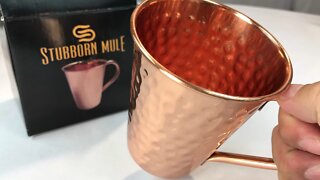 1:57
1:57
Peter von Panda
7 years agoTapered Moscow Mule Copper Mug by Stubborn Mule Review
577 -
 3:20
3:20
Peter von Panda
8 years ago100% Pure Moscow Mule Copper Mug Review
582 -
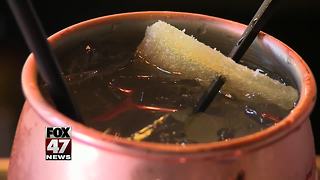 1:46
1:46
WSYM
6 years agoReport: Drinking Moscow Mules from copper mugs could make you sick
46 -
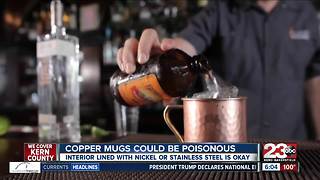 1:50
1:50
KERO
6 years agoInterior lining of copper mugs could be dangerous to your health
55 -
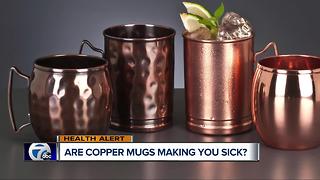 1:46
1:46
WXYZ
6 years agoAre copper mugs making you sick?
6 -
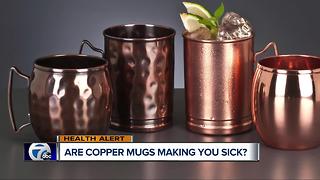 1:46
1:46
WXYZ
6 years agoAre copper mugs making you sick?
6 -
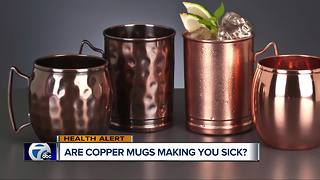 1:46
1:46
WXYZ
6 years agoAre copper mugs making you sick?
16 -
 9:28
9:28
JasonCorey
1 year ago14 Foods That Can Kill Your Cane Corso & any Dog
283 -
 4:27
4:27
Natural Cures
6 years ago $0.12 earned8 Warning Signs You May Have a Dangerous Amount of Heavy Metals in Your Body
523 -
 5:44
5:44
Natural Cures
7 years agoToxic and Dangerous Foods Your Dog Should Never Eat
138